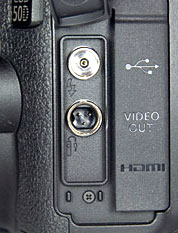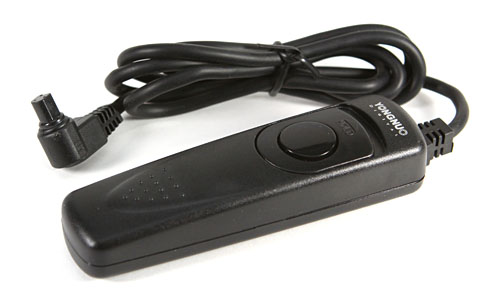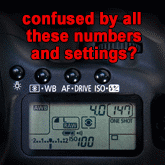
Until recently, my primary camera was a Canon 350D, which uses a 2.5mm stereo socket (E3) for connecting a shutter release. I built a homebrew shutter release for it, which worked very effectively.
Having recently upgraded to a Canon 50D, I can no longer use my homebrew shutter release, as the 50D has an N3 socket, rather than an E3 socket (2.5mm stereo socket). Rather than purchase a complete shutter release for the 50D, I did some research into the Canon N3 Connector Pinout and Wiring, to see if I could source an N3 connector, so I could modify my shutter release, and add an N3 connector to it.
As mentioned in my earlier post on the Canon N3 Connector Pinout and Wiring, there are a number of options for sourcing an N3 connector, including:
- Buy a genuine Canon remote
- Buy a genuine Canon or Pocket Wizard/etc cable
- Buy a cheap remote from eBay
- Make your own N3 connector
I wanted to be able to re-use my homebrew shutter release, and just modify it by adding an N3 connector, to allow it to be used with the 50D.
The cheapest option for obtaining an N3 connector was to buy a cheap remote on eBay, and cannibalise it, discarding the remote, and just using the N3 connector.
Some quick searching on eBay turned up lots of remotes, including many surprisingly cheap remotes from various vendors located in Hong Kong.
The cheapest suitable remote I could find was listed by outstandingstore111 with a "buy it now" price of just AUD$4.90 plus AUD$4.50 postage. It was listed on eBay as "RS-80N3 Remote Shutter for Canon EOS 5D 20D 30D 40D", and appeared to be a copy of Canon's RS-80N3 remote, which typically retails for USD$50 or AUD$90.
I subsequently bought and paid for the remote via eBay, and waited for it to arrive in the mail. I was expecting to have to spend more than that just for the N3 connector, and didn't have high expectations on the quality of the remote, due to the low cost.
Later that week, the remote arrived in the mail. The box was labelled as "Yongnuo Remote Switch RS-C3", and upon initial inspection, the quality of the remote was much better than I was expecting.
Here is a quick photo of the Yongnuo remote.

I'll post a review of the Yongnuo remote in the near future.
Updates - reviews of the following remotes have now been published:
24 February 2009: Phottix Nikos Digital Timer Remote
2 March 2009: Phottix Cleon wired/wireless remote
11 March 2009: Phottix Cleon II wired/wireless remote
16 April 2009: Phottix Hero LiveView Wireless Remote
9 June 2009: Phottix Plato 2.4GHz Wireless Remote



Does this mean you're going to use the remote you purchased rather than just the connector and scrap your previous idea?